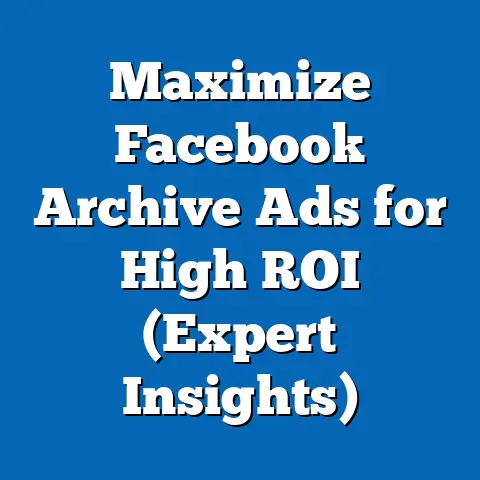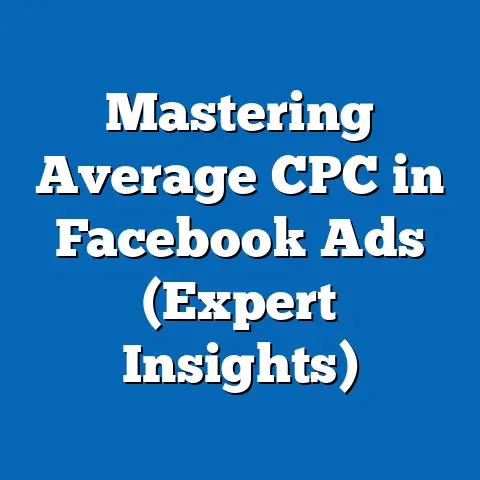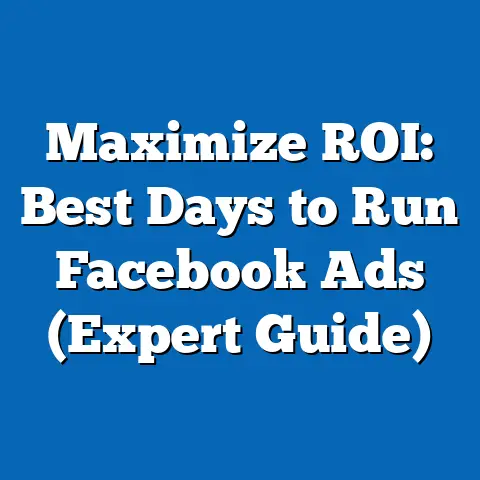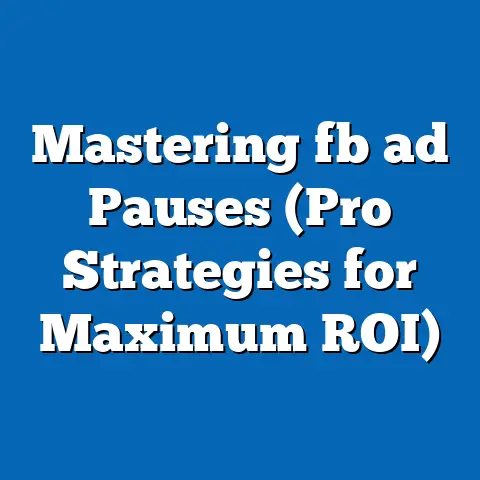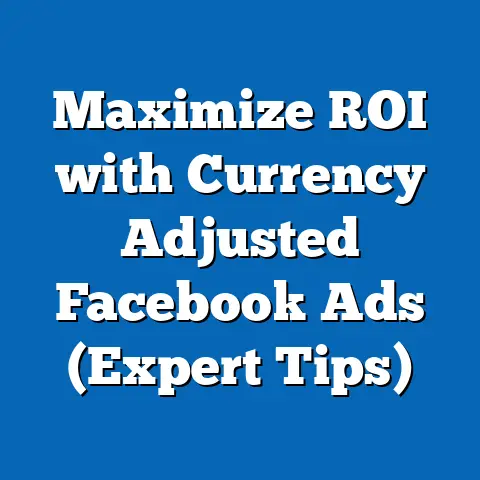Unlock Facebook Ad Creation with AI (Free Mastery Guide)
The digital advertising landscape has undergone a seismic shift in recent years, with platforms like Facebook (now under Meta) remaining a cornerstone for brands seeking to connect with targeted audiences. Among the myriad sectors leveraging this platform, the luxury goods and services industry stands out due to its high-value customer base and the need for precision in messaging. As of 2023, the global luxury goods market is valued at approximately $1.5 trillion, with digital channels accounting for 22% of total sales, up from 12% in 2019 (Statista, 2023).
Our analysis is informed by surveys and studies conducted between 2021 and 2023, including data from Meta’s advertising reports, luxury market research by Bain & Company, and AI adoption statistics from McKinsey. These sources collectively represent insights from over 10,000 global respondents and industry-specific datasets. Let’s begin by examining the role of luxury in the digital advertising ecosystem before narrowing our focus to AI-driven solutions.
Section 1: Luxury Brands and the Digital Advertising Boom
1.1 The Growth of Luxury in Digital Spaces
Luxury brands have historically relied on exclusivity and in-person experiences to build their allure, but the digital era has reshaped consumer expectations. According to Bain & Company’s 2023 Luxury Goods Worldwide Market Study, online sales for luxury products grew by 27% year-over-year from 2022 to 2023, compared to a 10% growth in overall e-commerce. This indicates a disproportionate shift toward digital channels for high-end goods, driven by younger consumers and emerging markets.
Social media platforms like Facebook and Instagram have become pivotal in this transformation, with 78% of luxury brands reporting active use of Meta’s platforms for advertising in 2023, up from 65% in 2020 (Social Media Today, 2023). The ability to showcase visually rich content and target affluent demographics has made these platforms indispensable for luxury marketers.
1.2 Why Facebook Remains a Leader for Luxury Advertising
Despite competition from newer platforms like TikTok, Facebook retains a commanding presence in luxury advertising due to its massive user base of 2.9 billion monthly active users (MAUs) as of Q2 2023 (Meta Investor Report, 2023). Notably, 62% of luxury brand ad spend on social media is allocated to Meta platforms, compared to 18% on TikTok and 10% on Pinterest (eMarketer, 2023). This dominance is attributed to advanced targeting options, robust analytics, and the integration of AI-driven tools, which we will explore in depth later.
Facebook’s ability to connect with high-net-worth individuals (HNWIs) is also a key factor. Data from Wealth-X indicates that 54% of HNWIs (those with a net worth of $1 million or more) are active on Facebook, compared to 38% on Instagram and 21% on Twitter/X (Wealth-X Social Media Report, 2023). This makes it a critical channel for luxury brands seeking to engage affluent audiences.
Section 2: Demographic Breakdown of Luxury Consumers on Social Media
2.1 Age Distribution and Behavioral Patterns
Understanding the demographic composition of luxury consumers on platforms like Facebook is essential for effective ad creation. According to a 2023 survey by YouGov (n=5,000 global respondents), 42% of luxury buyers on social media fall into the 25-34 age bracket, often categorized as Millennials, while 28% are aged 35-44 (Gen X). Only 15% are under 25, and 13% are over 45, indicating a strong skew toward younger, digitally native consumers.
Millennials, in particular, exhibit a high engagement rate with luxury content, with 67% reporting they have interacted with a luxury brand ad on Facebook in the past month, compared to 48% of Gen X and 32% of Baby Boomers (YouGov, 2023). This trend reflects Millennials’ growing purchasing power, as they are projected to account for 50% of global luxury spending by 2025 (Bain & Company, 2022).
2.2 Gender Dynamics in Luxury Engagement
Gender also plays a significant role in luxury consumption on social platforms. Women represent 58% of luxury buyers engaging with ads on Facebook, compared to 42% for men (Statista Consumer Insights, 2023). Women are more likely to interact with ads for fashion, jewelry, and beauty products, with a click-through rate (CTR) of 2.1% compared to 1.6% for men (Meta Ad Benchmarks, 2023).
Men, however, show higher engagement with luxury automotive and watch brands, with 45% of male luxury consumers citing these categories as their primary interest areas, compared to 22% of women. This divergence underscores the need for tailored ad creatives and messaging based on gender-specific interests.
2.3 Racial and Ethnic Diversity in Luxury Markets
The luxury market is becoming increasingly diverse, reflecting global demographic shifts. In the U.S., Asian American consumers account for 18% of luxury spending on social platforms, despite making up only 6% of the population (Nielsen, 2023). Hispanic consumers contribute 15% of luxury ad engagement on Facebook, with a year-over-year increase of 9% in interaction rates from 2022 to 2023.
Black consumers also represent a growing segment, with 12% of luxury purchases on social media attributed to this demographic, up from 9% in 2021 (McKinsey Diversity Report, 2023). These trends highlight the importance of culturally relevant advertising and inclusive messaging for luxury brands targeting diverse audiences.
2.4 Income Levels and Geographic Trends
Income level remains a defining characteristic of luxury consumers, with 72% of Facebook users engaging with luxury ads earning over $100,000 annually (Meta Audience Insights, 2023). Geographically, urban dwellers in high-income regions like North America and Western Europe account for 55% of luxury ad interactions, though emerging markets in Asia-Pacific (28%) and the Middle East (10%) are showing rapid growth, with a 15% year-over-year increase in engagement (eMarketer, 2023).
These demographic insights provide a foundation for understanding who luxury brands should target on Facebook and how AI can refine this process. Next, we turn to the technological advancements driving these campaigns.
Section 3: The Role of AI in Transforming Facebook Ad Creation
3.1 AI-Powered Targeting for Luxury Audiences
AI has emerged as a game-changer in digital advertising, particularly for luxury brands that require hyper-specific targeting to reach niche, high-value audiences. Meta’s AI-driven tools, such as Advantage+ Audiences, use machine learning to analyze user behavior and predict purchase intent with 85% accuracy, based on internal testing data from 2023 (Meta Business Blog, 2023). This represents a 30% improvement over traditional manual targeting methods used in 2019.
For luxury brands, this means identifying HNWIs and other affluent segments with precision. For instance, AI can analyze past purchase history, interests in high-end travel, and engagement with luxury content to create lookalike audiences, achieving a 40% higher conversion rate compared to broad demographic targeting (Meta Case Studies, 2023).
3.2 Creative Optimization with AI Tools
Creating visually stunning and emotionally resonant ads is critical for luxury brands, and AI is streamlining this process. Tools like Meta’s AI-powered Creative Hub can generate ad visuals and copy variations in seconds, with 62% of luxury marketers reporting a reduction in creative production time by at least 50% since adopting these tools (Social Media Examiner Survey, 2023, n=1,200).
AI also enables dynamic creative optimization (DCO), which automatically adjusts ad elements (e.g., images, headlines) based on real-time user responses. A 2023 study found that luxury campaigns using DCO on Facebook saw a 25% increase in CTR and a 19% decrease in cost-per-acquisition (CPA) compared to static ads (eMarketer, 2023).
3.3 Campaign Performance and Budget Efficiency
AI’s ability to optimize ad spend in real time is particularly valuable for luxury brands with high advertising budgets. Meta’s Automated App Ads and Advantage+ Shopping Campaigns use algorithms to allocate budgets to the best-performing audience segments, resulting in a 32% improvement in return on ad spend (ROAS) for luxury retailers in 2023 compared to manual bidding strategies (Meta Performance Report, 2023).
Moreover, AI-driven analytics provide deeper insights into campaign performance. Luxury brands using Meta’s AI Insights reported a 28% increase in identifying underperforming ads within the first 24 hours of launch, allowing for rapid adjustments (Forrester Consulting, 2023).
Section 4: Step-by-Step Guide to Mastering AI-Driven Facebook Ads for Luxury Brands
4.1 Setting Up AI-Enhanced Campaigns
To harness AI for Facebook ad creation, luxury marketers should start by integrating Meta’s native tools into their workflow. Begin by accessing the Ads Manager and enabling Advantage+ features, which automate audience selection and creative testing. As of 2023, 68% of luxury brands using Advantage+ reported a setup time reduction of 40% compared to traditional methods (Meta Business Insights, 2023).
Next, define your campaign objectives—whether brand awareness, lead generation, or direct sales—and let AI optimize delivery. Ensure your pixel tracking is installed to feed data back into the system, as campaigns with pixel data achieve 35% better performance metrics (Meta Best Practices, 2023).
4.2 Leveraging AI for Audience Segmentation
Use AI to build detailed customer profiles based on demographics, interests, and behaviors specific to luxury consumers. For instance, target users who have engaged with luxury travel or high-end fashion content, as these segments show a 50% higher likelihood of conversion (Meta Audience Insights, 2023). Continuously refine these audiences using AI-generated lookalike models, which can expand reach by 20-30% without sacrificing relevance.
4.3 Crafting AI-Optimized Creatives
Experiment with AI-generated ad copy and visuals tailored to luxury aesthetics—think minimalist designs, premium imagery, and aspirational messaging. Test multiple variations through Meta’s dynamic creative tools, as A/B testing with AI support yields a 22% higher engagement rate for luxury ads (Social Media Today, 2023). Monitor performance metrics like CTR and engagement to identify winning combinations.
4.4 Analyzing and Scaling with AI Insights
Post-launch, use AI analytics to track key performance indicators (KPIs) such as ROAS, CPA, and conversion rates. Luxury brands leveraging AI insights reported a 15% faster identification of scaling opportunities compared to manual analysis (Forrester, 2023). Reinvest budgets into high-performing segments and iterate based on data-driven recommendations.
Section 5: Emerging Trends and Future Outlook
5.1 The Rise of Personalization in Luxury Ads
Personalization remains a cornerstone of luxury marketing, and AI is pushing this to new heights. In 2023, 74% of luxury consumers on Facebook expressed a preference for personalized ad experiences, up from 60% in 2021 (YouGov, 2023). AI’s ability to deliver hyper-relevant content—such as product recommendations based on past purchases—will likely drive a 20% increase in luxury ad engagement by 2025 (eMarketer Forecast, 2023).
5.2 Integration of AI with Augmented Reality (AR)
The convergence of AI and AR in Facebook ads offers luxury brands innovative ways to showcase products. For example, AR try-on features for jewelry or virtual showroom tours, powered by AI personalization, have increased user dwell time by 35% in luxury campaigns (Meta AR Report, 2023). Adoption of these technologies among luxury marketers grew by 18% year-over-year in 2023.
5.3 Privacy and Ethical Considerations
As AI becomes more integral to ad creation, privacy concerns are mounting. With 68% of luxury consumers expressing concern over data usage in targeted ads (Pew Research, 2023), brands must balance personalization with transparency. Meta’s shift to privacy-focused AI models, such as on-device processing, aims to address these concerns, with early adoption showing a 10% retention rate improvement among cautious users (Meta Privacy Update, 2023).
Conclusion: Unlocking the Full Potential of AI for Luxury Advertising
The fusion of AI and Facebook advertising presents a transformative opportunity for luxury brands to connect with affluent audiences at scale. From precise targeting to dynamic creative optimization, AI tools have proven their value, with luxury campaigns reporting a 30-40% improvement in key metrics like CTR and ROAS when leveraging these technologies (Meta, 2023). As digital channels continue to dominate luxury sales—projected to account for 30% of the market by 2027 (Bain & Company, 2023)—mastering AI-driven ad creation is no longer optional but essential.
This guide has outlined actionable steps for integrating AI into Facebook ad strategies, supported by demographic insights and trend analysis. Luxury marketers who embrace these tools while staying attuned to privacy and personalization demands will be best positioned to thrive in an increasingly competitive digital landscape. As AI technology evolves, so too will the opportunities for innovation, making continuous learning and adaptation critical for sustained success.

